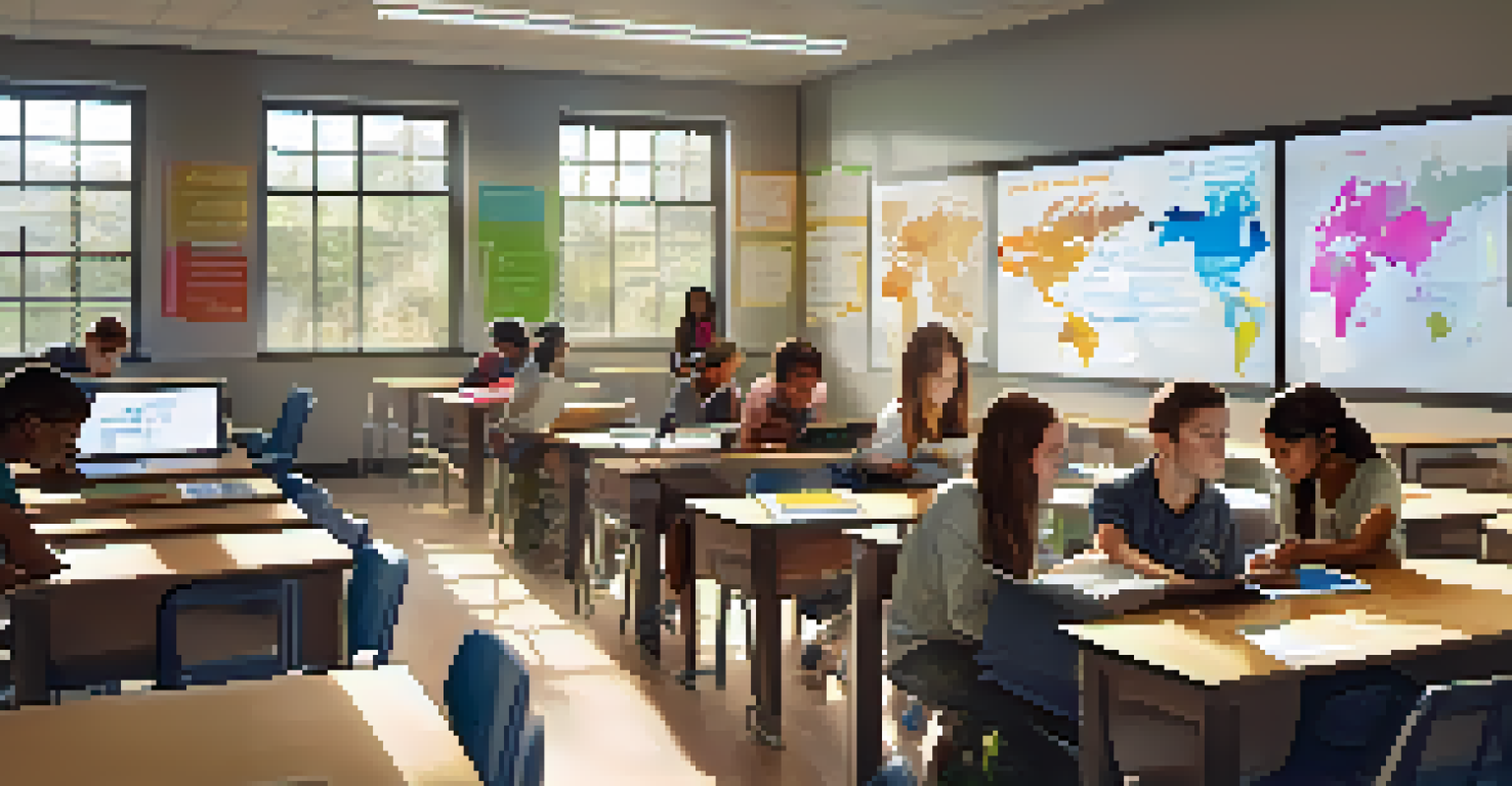Impact of Mobile Learning on Student Engagement and Success

Understanding Mobile Learning and Its Relevance Today
Mobile learning, often referred to as m-learning, is the use of mobile devices for educational purposes. This approach allows students to access learning materials anytime and anywhere, breaking the traditional boundaries of the classroom. Its relevance has surged, particularly as technology has become more integrated into daily life, making education more accessible.
Mobile learning is not just a trend; it’s a transformation in education that empowers learners to take charge of their own learning journey.
Imagine being able to study while waiting for your coffee or on the bus to school. This flexibility not only caters to diverse learning styles but also fits seamlessly into the hectic lives of students today. Mobile learning empowers learners by providing them with the tools they need to take charge of their education.
As educational institutions embrace this shift, they are not just adapting to trends but are also fostering environments where students can thrive. The ability to learn on-the-go can lead to higher engagement and improved academic outcomes, making mobile learning a powerful ally in education.
Boosting Engagement Through Interactive Learning Tools
One of the standout features of mobile learning is its ability to incorporate interactive tools that grab students' attention. From gamified quizzes to interactive simulations, these tools transform traditional learning into an engaging experience. When students can actively participate rather than passively consume information, their interest and retention increase significantly.

For example, consider a student preparing for a science exam. Instead of flipping through textbooks, they can use an app that provides interactive experiments or AR experiences. This hands-on approach not only makes learning fun but also deepens understanding through experiential learning.
Mobile Learning Enhances Accessibility
Mobile learning platforms include features that cater to diverse needs, ensuring all students can access educational resources effectively.
Moreover, the instant feedback provided by these tools allows students to assess their understanding in real-time. This immediate response can motivate learners to improve and fosters a sense of ownership over their educational journey, further enhancing engagement.
Personalized Learning Experiences for Diverse Needs
Mobile learning platforms often come equipped with features that allow for personalized learning experiences. Every student has unique strengths, weaknesses, and learning preferences, and mobile learning can cater to these differences effectively. Adaptive learning technologies can assess a student’s progress and adjust the content accordingly, ensuring that no one is left behind.
The future of education is mobile, and it is about time we embrace the flexibility and accessibility that it offers.
Imagine a student struggling with math concepts. A mobile app can identify their specific challenges and offer tailored exercises that target those areas. This personalized approach not only boosts confidence but also helps students learn at their own pace, which is crucial for mastering complex subjects.
By providing customized learning paths, mobile learning fosters inclusivity, allowing all students to engage with the material in a way that suits them best. This adaptability is key in promoting student success and making learning more effective.
Enhancing Collaboration Among Students and Teachers
Mobile learning also facilitates collaboration, bridging gaps between students and teachers. With tools like discussion forums, chat apps, and collaborative documents, students can easily connect and share knowledge outside of classroom hours. This continuous interaction fosters a sense of community and enhances the learning experience.
For instance, a group project can be managed through a mobile platform, allowing students to brainstorm ideas, share resources, and provide feedback in real-time. This collaboration not only builds teamwork skills but also encourages peer learning, where students can learn from each other’s insights and experiences.
Interactive Tools Boost Engagement
Incorporating gamified quizzes and simulations transforms traditional learning into an engaging experience, increasing student interest and retention.
Teachers benefit as well, as they can monitor group dynamics and offer support when needed. This connectedness ultimately enriches the educational experience, making learning a shared journey rather than a solitary endeavor.
Overcoming Barriers to Learning with Accessibility Features
One significant advantage of mobile learning is its potential to overcome barriers to education, particularly for students with disabilities. Many mobile learning platforms include accessibility features like screen readers, voice commands, and customizable text sizes. These tools ensure that all students, regardless of their needs, can access educational resources.
For example, a visually impaired student can use a screen reader to navigate through learning materials, allowing them to participate fully in their education. This inclusivity not only empowers those students but also enriches the learning environment for everyone by promoting diversity.
Furthermore, mobile learning can offer support materials in multiple languages, catering to non-native speakers and helping them to thrive academically. By prioritizing accessibility, mobile learning creates equal opportunities for all learners, paving the way for greater success.
Real-Time Access to Resources and Information
In the era of information overload, mobile learning provides students with real-time access to a wealth of resources at their fingertips. Whether it’s research articles, videos, or educational podcasts, students can instantly find the information they need to enhance their understanding of a subject. This immediacy fosters curiosity and encourages independent learning.
Consider a student working on a history project. Instead of relying solely on library hours, they can quickly search for credible sources online using their mobile device. This ability to tap into vast databases of knowledge not only saves time but also empowers students to explore topics more deeply.
Real-Time Resources Foster Independence
With instant access to a wealth of information, students can enhance their understanding and explore topics independently, promoting proactive learning.
Moreover, having access to up-to-date information ensures that students are learning the most current and relevant content. This constant connection to resources not only enhances engagement but also supports academic success by encouraging students to be proactive in their learning.
Challenges and Considerations in Mobile Learning
While mobile learning offers numerous benefits, it’s essential to acknowledge the challenges that come with it. Distractions are a significant concern; the same device that provides educational resources can also lead students to social media and games. It’s crucial for educators and students to develop strategies to minimize these distractions and maintain focus.
Additionally, not all students may have access to smartphones or reliable internet connections, which can create disparities in learning opportunities. Educational institutions must work towards ensuring equitable access to technology to avoid widening the achievement gap.

Finally, while mobile learning is a fantastic tool, it should complement traditional learning methods rather than replace them. A balanced approach that integrates both mobile and in-class experiences can provide the most comprehensive educational experience, ultimately leading to greater student success.